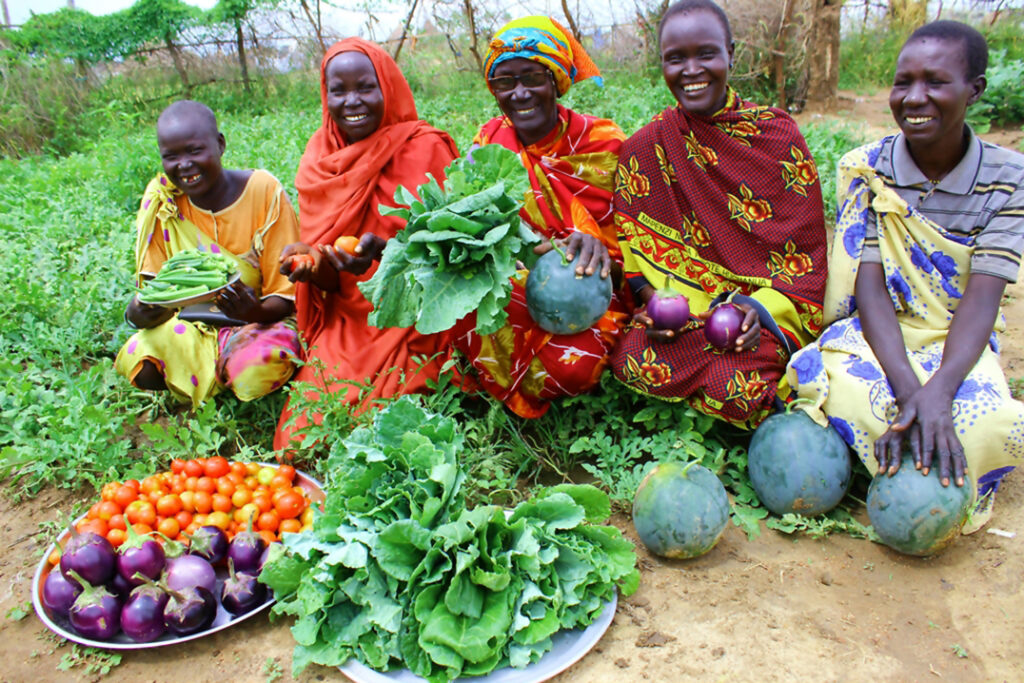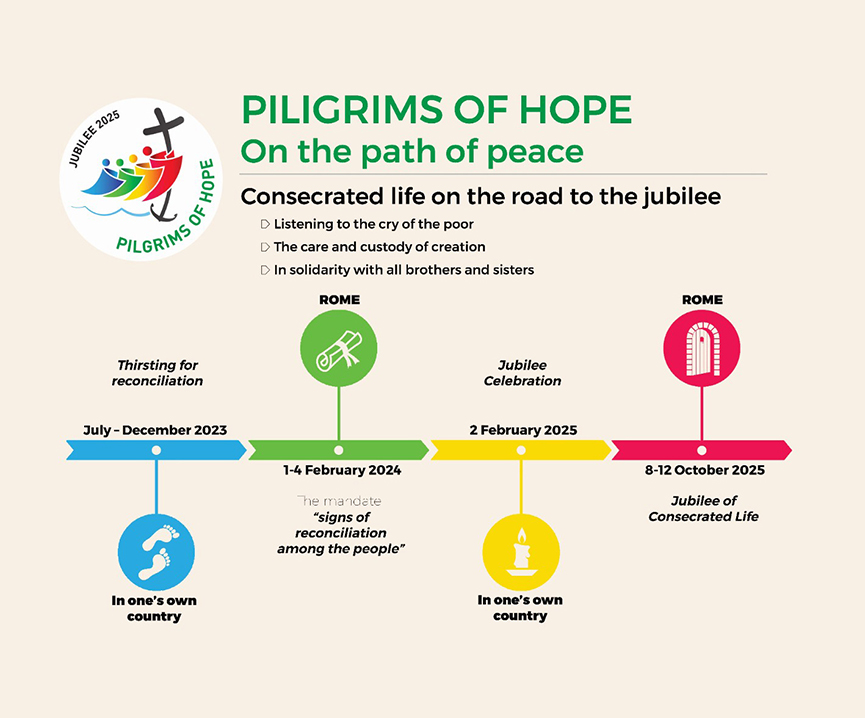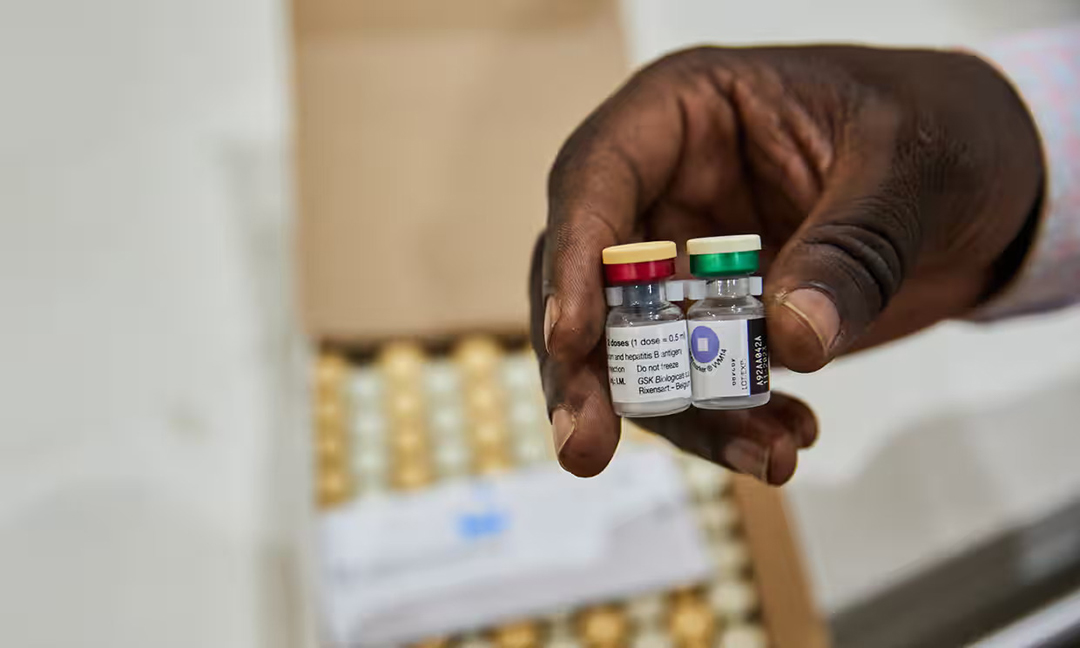
CONSECRATED LIFE
The painting on the front cover entitled “The disciples of Emmaus” reflects our journey of hope. Jesus not only walks with us, but gives us the wisdom to perform our ministries and opens our eyes to see Him in the people that we are serving.
RADAR

AFRICA’S UNTAPPED FOOD POTENTIAL
Wheat, maize and rice account for 60% of all calories consumed globally and in Africa
BY TAFADZWANASHE MABHAUDHI | PROFESSOR OF CLIMATE CHANGE, FOOD SYSTEMS AND HEALTH, CENTRE ON CLIMATE CHANGE AND PLANETARY HEALTH AT THE LONDON SCHOOL OF HYGIENE & TROPICAL MEDICINE
AFRICAN COUNTRIES have become reliant on a very small number of food items — a mere 20 plant species provide 90% of the food intake of her inhabitants—and her crop treasure trove is being neglected. This deprives the continent of diverse food sources, at the very time when research has found massive food and nutrition insecurity in Africa.
By 2020, about 20% of the continent’s population (281.6 million) faced hunger. This figure is likely to have increased, given the impacts of successive droughts, floods and COVID-19.
Historically, Africa had 30,000 edible plant species, and 7,000 were traditionally cultivated or foraged for food. The continent is a treasure trove of agrobiodiversity (a diversity of types of crops and animals) and its countries could easily feed themselves.
As society and agriculture evolved, many foods that defined diets and identity on the continent were lost. Many of these now occupy the status of neglected and under-utilised crop species. Knowledge of their production is slowly fading away.
We reviewed studies and policies related to wild food plants, nutrition and justice and found many under-utilised but nutritious and hardy crop species that could be grown to end hunger in Africa. These include Bambara groundnut, cowpea, pigeon pea, millet, sorghum and African leafy vegetables such as amaranth and wild mustard.
There are nutritious crops that can tolerate heat and drought and could be planted by smallholders on land that is unsuitable for mass monoculture.
Governments should implement policy changes, support and fund research into the development of the crops, encouraging their production and consumption. They should promote them through incentives and awareness campaigns to build and educate people about the health and environmental benefits, dispelling the social stigma that these foods are only eaten by poor people.
Resetting Africa’s food systems
The current agrifood system has not delivered for Africa. Africa’s food and nutrition insecurity is not, as is often assumed, the result of low agricultural productivity, poverty or the hot, harsh climate. Africa has millions of hectares of fertile soil, now threatened by degradation, and made worse by climate change.
The Green Revolution of the 1950s and 1960s, in which monocrops like maize, wheat and rice were grown on a mass scale, with large amounts of fertilisers, heralded the industrial agrifood system. However, it did not translate into success in Africa, where monoculture led to ecological and environmental degradation. It undermined the livelihoods of millions of smallholder farmers and created a food and nutrition insecurity paradox—hunger amid plenty.
Neglecting agrobiodiversity in favour of monoculture left even these cash crops lacking resilience and vulnerable to external shocks. This made food production even more unsustainable, which led to hunger, vulnerability, poverty and inequality.
Next steps
Climate change is already affecting yields through recurrent floods and droughts, worsening hunger on the continent. Mainstreaming neglected and under-utilised crop species could boost agrobiodiversity on the continent and improve plant resilience in times of climate change. However, this requires giving these crop species equal status with major crops by stimulating their production by smallholder farmers.
Smallholder agriculture in Africa is a vehicle through which poverty reduction and rural development can be achieved. Recent research into crop and dietary diversity, smallholder farming and malnutrition in South Africa found that smallholder farmers who grow a wider range of crops have a more diverse diet. They also make better sales in local markets and use the profits to buy a wider range of food.
If supported with training, market and credit access, smallholder farmers could contribute to the dietary diversity of communities. This also translates to improved income for rural households and creates employment. Growing underutilised crops can promote pathways out of poverty.
Another potential positive outcome could be the empowerment of women. Women are mainly responsible for producing and conserving neglected and underutilised crop species. Switching to these crops would empower them if they were included in new value chains set up to get these crops into the market. New government policies are imperative, such as offering women credit facilities, land, water rights and viable markets.
Lastly, mainstreaming these crops could help achieve a more socially just agrifood system. Reverting to forgotten fruit and vegetables would also represent a locally driven solution that harnesses Africa’s natural and social capital. It would empower African communities to achieve food sovereignty, sustainable livelihoods, social justice, and human and environmental wellbeing.
With support, neglected and under-utilised crop species could be “opportunity crops” for achieving an Afrocentric agrifood system that celebrates Africa’s heritage.
Source: theconversation.co




